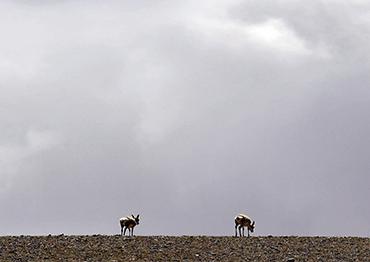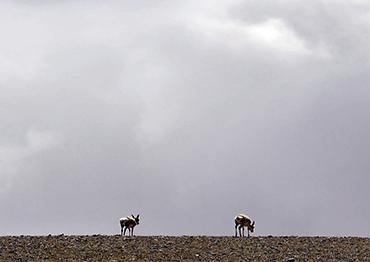Li Xiaonan, former director of Sanjiangyuan National Park Administration in Qinghai Province, told the reporter in August 2017 that grassland fence construction is controversial.
“The national key infrastructure construction projects including grassland fencing cannot be randomly removed. We have conducted preliminary studies and found that fencing and a grazing ban did effectively contain grassland degradation in certain areas. We need scientific studies to support future possible decisions on when to remove fences.”
Addressing Ganda’s community-based initiative in early 2017, Li said: “We can’t completely deny the effectiveness of fencing projects to preserve grassland resources based only on a single case.”
In an article published in mid-June in the China Green Times by Nan Zhibiao of the Chinese Academy of Engineering, Nan reiterated the importance of grassland fencing. “Fencing is a scientific utilization of the grassland resources and an important measure to enhance production efficiency... It is also a universally adopted measure for grassland management and utilization,” Nan wrote. “We cannot deny the function of [all] fences just because there have been problems in construction and utilization of fences in certain places.”
Sun Jian told the reporter that accurate fence control experiments require long-term observations and should be conducted in different places. “Our research is based on comprehensive analysis of the current literature so far, which is a preliminary conclusion rather the final one, and we suggest that further studies, especially long-term field research, are urgently needed,” Sun said.
“Fencing on the grassland poses different problems in different situations, thus there is no one-size-fits-all solution, and it is also not wise to remove all fences at the moment across the whole nation,” Sun said, who believes third-party evaluation is urgently needed for a policy review addressing updated grassland management policy.
In Sun’s view, to maximize the benefit of having fencing, there should be periodic evaluations to form a long-term mechanism, so that once grassland degradation is contained and recovered, fences can be removed.
The removal of fences in Inner Mongolia is significant, as it marks the beginning of an official fence removal movement for sustainable grassland management.
“When the grasslands were allocated to individual households by contract, almost every household started to set up fences... We hope the recent removal of the wire fences can break the barriers that restrict rotational grazing and will foster the revival of harmonious coexistence between humans and nature,” Mijige Dorji, chairman of the Manglai Animal Husbandry Cooperative and Party Secretary of Kerlunsumu Gacha Village, told local media.
“This is the first stage of a pilot program in Inner Mongolia, and we will keep evaluating if removal of fences would improve the ecology and livelihoods,” Tian Liangzhong said.
“As far as there is no consensus and scientific conclusion addressing the fence issue, we remain cautious and reserved. We’ll choose appropriate places to trial the fence removal initiative depending on local conditions.”

 Old Version
Old Version

